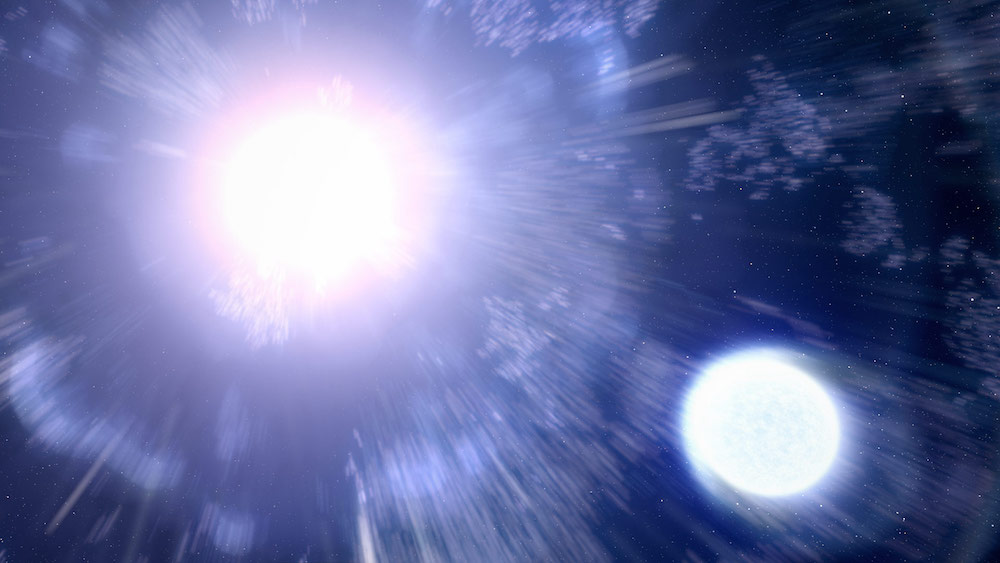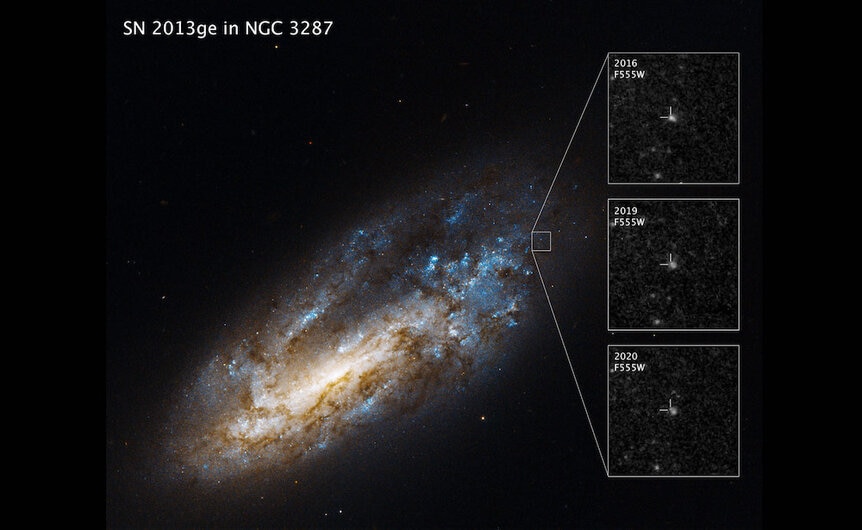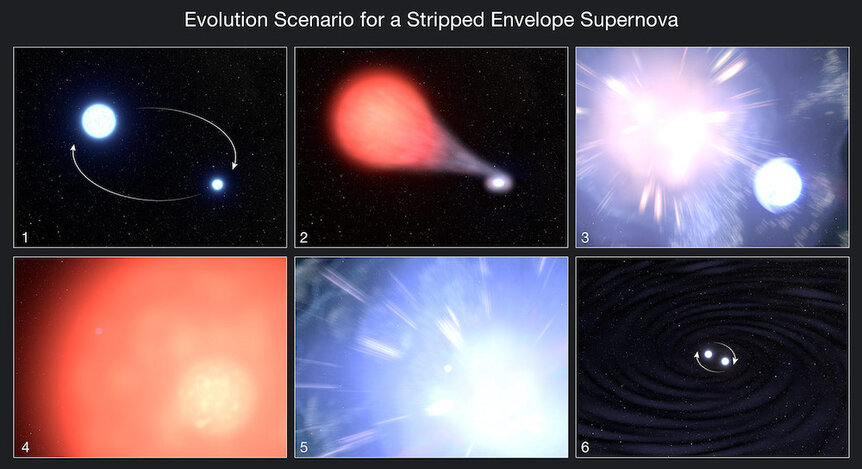Create a free profile to get unlimited access to exclusive videos, sweepstakes, and more!
Companion star survives the hell fury of a supernova
A face full of supernova and this star still shines.

One of the last places in the Universe you want to find yourself is next to a supernova. When a star explodes, the energy released is mind crushing: They can be 10 billion times as luminous as the Sun, literally outshining all the other stars in a galaxy combined. The chaos and mayhem are absolutely brutal, and it’s difficult to believe anything could survive it.
Yet a relatively new hypothesis is that something can: A binary companion star, one that orbited the supernova progenitor before it exploded, and that may play a crucial role in the star going supernova in the first place. And now just such a companion star may have been found in Hubble images, one that survived the explosion and may still be reeling from the effects [link to paper].
In November 2013 the light from the supernova reached Earth. Called SN2013ge, it came from the explosion of a star in NGC 3287, a spiral galaxy in the constellation of Leo. It’s what’s called a core collapse supernova, when a massive star runs out of fuel at the end of its life. The stellar core collapses, sending out a vast blast of energy that blows away the star’s outer layers, accelerating them to a decent fraction of the speed of light.
But it was a weird one. Normally, the outer layers of a star are almost entirely hydrogen, so when we take spectra of the supernova we see lots of hydrogen in it. But there’s a class of core collapse supernovae that does not show hydrogen. The thinking is that in the last stages of its life, the star blew away its outer layers in a fierce wind, and that material is lost to space before the star explodes. These are called stripped supernovae. SN2013ge was clearly this kind of supernova.
We do see stars blasting away their outer layers — called Wolf-Rayet stars, they’re nearly as terrifying as supernovae — but observations of supernovae don’t quite jibe with this idea. So astronomers turned to a different hypothesis: The supernova progenitor star wasn’t alone, but was instead in a binary system.
If it had a companion star, things change. When the progenitor starts to die, it swells up into a huge red supergiant. This happens whether the star is single or not; examples include Betelgeuse and Antares, both so luminous they’re among the brightest stars in the sky despite their great distance from us.
But if there’s another star there in a close orbit around it, the red supergiant will dump a lot of its outer layers onto this other star instead of losing them to space. The second star accumulates this matter — mostly hydrogen — and can gain a lot of mass. When the first star explodes we don’t see hydrogen in it because it’s all on the other star.
This changes what we see. The supernova fades over time, but the light from the second star doesn’t, so we should see a huge brightening during the explosion, then a fading, but then it levels off after a few years due to the second star’s steady light. Also, you expect to see a lot of ultraviolet light from the event as the hell fury of the supernova slams into the second star, creating an immense and powerful shock wave.
And that’s just what’s seen from SN2013ge. The astronomers proposed using Hubble Space Telescope specifically to observe stripped supernovae to look for evidence of a companion star, and found it in this case. Looking at SN2013ge for years after the event, they find the light from the explosion had faded but right next to it was a steady source that did not fade. They also saw two bright peaks in ultraviolet light during the supernova itself, indicating they were seeing UV from the explosion as well as the shock wave as material blasted the second star.
This is the first time such evidence has been found in a stripped supernova. To be fair, there could be other reasons this was seen; perhaps the second source is a small, unresolved cluster of stars that hosted the progenitor. It would have to be unusually small, though, and the astronomers assign only a 10% chance this is the case. It could also be material previously ejected from the progenitor star getting whacked by the exploded material, but the colors of the light make this unlikely as well.
If the second source is truly a companion star, then it’s weird too: The light indicates it’s a B5 supergiant, an immense and truly massive star late in its life. That would be expected if it ate a lot of the other star’s material, but it’s also a lot redder than expected for such a star. That could be due to it still recovering from all that hydrogen dumped on it before the first star exploded, though.
More observations, as always, are needed. And not just of SN2013ge but also of other stripped supernovae. The good news is that these do happen often enough to spot, and we do tend to get observations of them early on as well as monitor them for many years. And if the SN2013ge second source is actually a B5 supergiant, then it too will eventually explode. Maybe not for many years, or even centuries, but who knows? We may get lucky if we keep watching these ridiculously powerful events.




























